Reproduction is a very important topic in the class 10th Biology section. Reproduction is a biological process by which living organisms produce offspring or new individuals of the same species. It ensures the continuation of a species over generations. Reproduction is generally of two types: Sexual reproduction and Asexual asexual reproduction. Asexual reduction involves a single parent and results in genetically identical offspring, as seen in simple organisms like bacteria and some plants.
Sexual reproduction involves two parents contributing genetic material to create unique offspring. This process includes the fusion of gametes (sperm and egg cells) through fertilization, leading to genetic diversity within a species. Reproduction is essential for the survival of species, as it enables adaptation to changing environments and the passing down of favorable traits to subsequent generations.
Asexual Reproduction Definition
Asexual reproduction is a biological process in which an organism produces offspring that are genetically identical to itself, without the involvement of gametes (sperm and egg cells) or the fusion of genetic material from two parents. This can occur through various methods such as binary fission, budding, spore formation, regeneration, vegetative reproduction, and fragmentation.
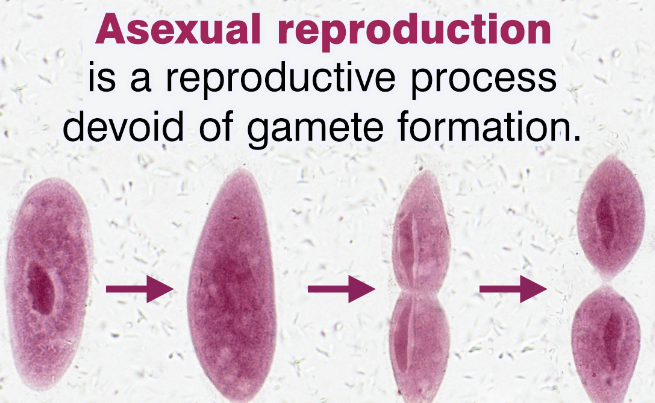
Examples of Asexual Reproduction
Some organisms can switch between sexual and asexual reproduction depending on environmental conditions, and some may predominantly use one method while occasionally resorting to the other. We have mentioned some examples of asexual reproduction below.
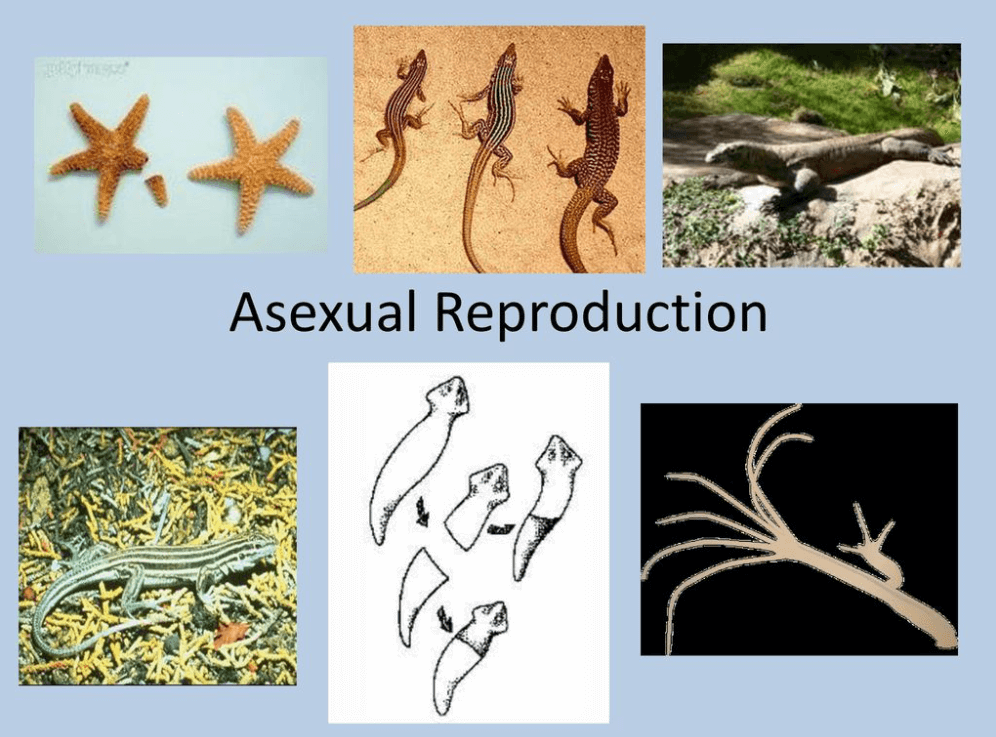
- Bacteria: Many bacteria reproduce asexually through binary fission, where a single cell divides into two identical daughter cells.
- Fungi: Some fungi reproduce asexually through processes like budding, where a small outgrowth forms on the parent and eventually detaches to become a new organism.
- Plants: Many plants can reproduce asexually through methods like runner (stolons), where horizontal stems grow along the ground and develop into new plants.
- Protists: Amoebas, for example, can undergo binary fission to create identical offspring.
- Invertebrates: Some invertebrates like starfish can reproduce asexually through a process called parthenogenesis, where unfertilized eggs develop into offspring.
- Hydra: These aquatic organisms reproduce asexually through budding, where outgrowths develop into miniature hydras that detach and become independent.
Advantages of Asexual Reproduction
- Efficiency: Asexual reproduction doesn’t require the search for a mate, saving time and energy spent on finding a partner.
- Preservation of Traits: Asexual reproduction allows for the preservation of favorable genetic traits because offspring are genetically identical to the parent.
- Rapid Reproduction: Organisms can reproduce quickly since they don’t need to go through mating and fertilization processes.
- Adaptation to stable environments: In stable environments, asexual reproduction can be advantageous as it maintains successful traits without the need for genetic variation.
- Colonization: Asexually reproducing organisms can quickly colonize new environments, enhancing their ability to extend their range.
- Resource Efficiency: Asexual reproduction doesn’t require the allocation of resources to mate attraction or courtship behaviors.
- Consistent Offspring: Since offspring are generally identical to the parent, there’s consistency in traits and behaviors among generations.
Types of Asexual Reproduction
Asexual reproduction includes various methods like binary fission, budding, fragmentation, regeneration, spore formation, and vegetative propagation; where offspring are produced without the involvement of gametes or fertilization.
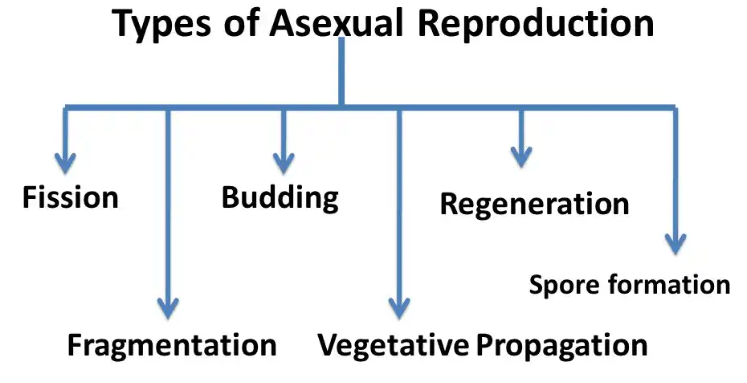
| Types of Asexual Reproduction | ||
| Types | Description | Examples |
| Binary Fission | The parent organism divides into two equal parts, each developing into a new individual. Common in bacteria and protists. | Bacteria, Amoebas. |
| Budding | A new organism grows as an outgrowth or “bud” from the parent organism. Once mature, the bud detaches and becomes an independent individual. | Starfish, and plants. |
| Fermentation | The parent organism breaks into offspring, without the involvement of male gametes (sperm). | Insects, Reptiles, and Amphibians. |
| Vegetative Propagation | New plants develop from vegetative structures like roots, stems, or leaves. Used in methods like runners, rhizomes, and cuttings in plants. | Strawberries, Potatoes |
| Regeneration | Some organisms regrow lost body parts. | Lizard, Starfish |
| Spore Formation | Specialized cells called spores are produced and can develop into new individuals under favorable conditions. | Mushrooms, Ferns, Bacteria, and Mosses. |
1. Binary Fission
Binary fission is a type of asexual reproduction that occurs in single-celled organisms, such as bacteria and some protists. During binary fission, the parent cell divides into two identical daughter cells, each with the same genetic material as the parent. This process allows these organisms to rapidly increase their population Binary fission can be seen in many organisms such as Amoeba, Paramecium, Cyanobacteria, and Plasmodium.
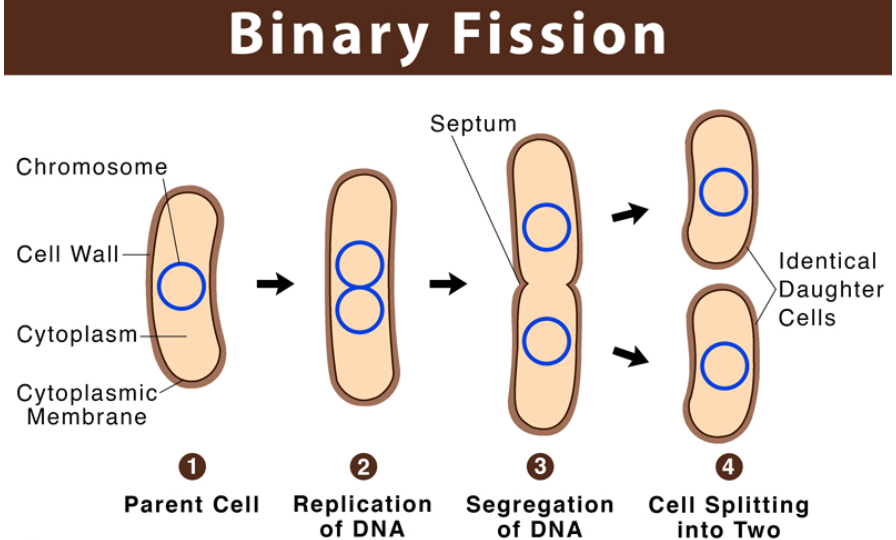
2. Budding
Budding is a form of asexual reproduction in which a new individual organism develops as an outgrowth or “Bud” on the body of the parent organism. This bud then grows, matures, and eventually detaches from the parent, becoming an independent organism. It’s a common method of reproduction in many organisms like yeast, certain plants, and some animals.
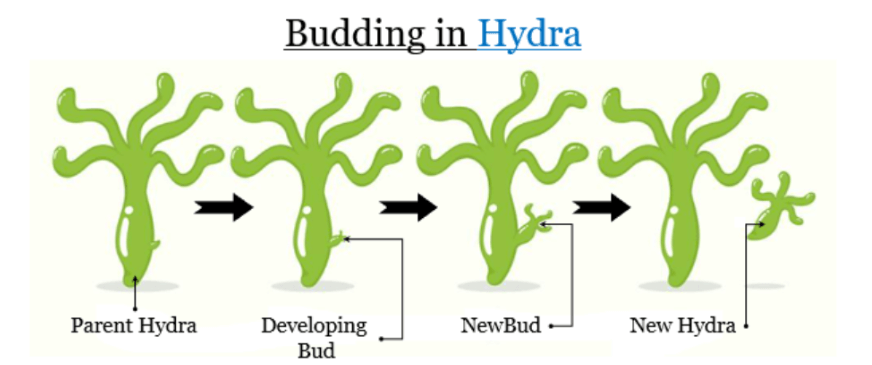
3. Fragmentation
Fragmentation is a type of asexual reproduction where an organism breaks into smaller fragments, each of which can develop into a new individual. This process is common in organisms like certain flatworms, starfish, and some plants. The fragments regenerate missing body parts and grow into complete organisms, essentially creating clones of the original organism.
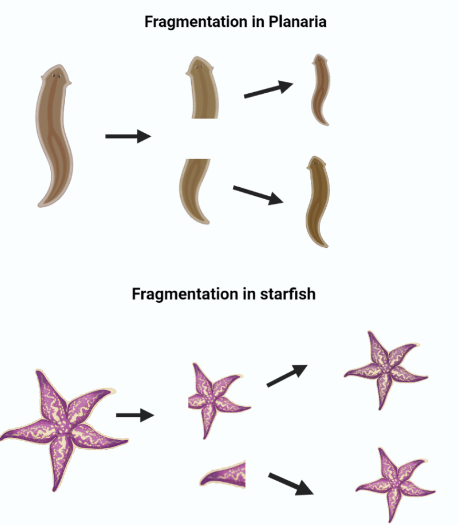
4. Regeneration
Regeneration is the process by which an organism regrows or replaces lost or damaged body parts. This ability to repair and replace tissue varies among different organisms. Some animals, like starfish and salamanders, have remarkable regenerative capabilities, allowing them to regrow limbs, organs, or even entire body sections. Regeneration involves complex biological mechanisms that enable cells to divide, differentiate, and recognize to restore the original structure and function of the organism.
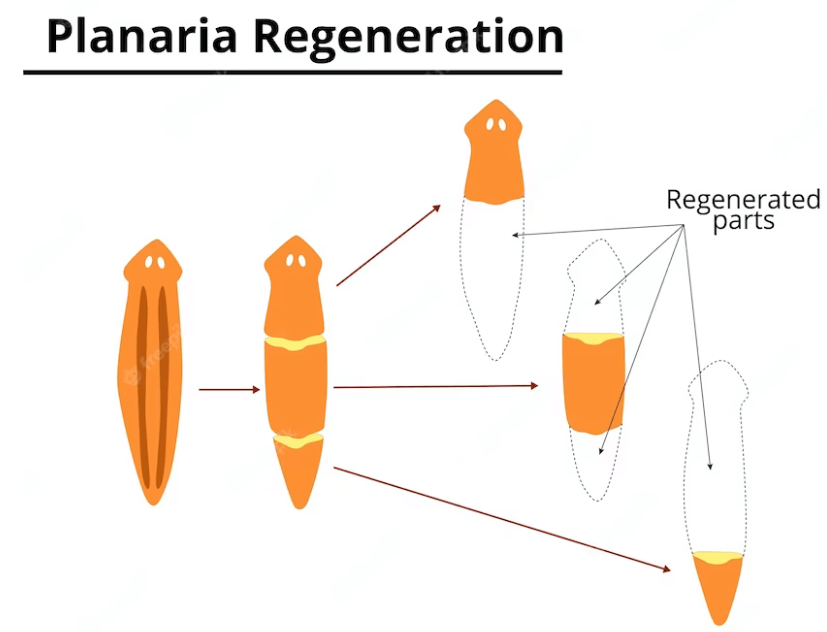
5. Vegetative Propagation
Vegetative propagation is a method of plant parts other than seeds, such as stems, roots, or leaves, to create new plants. This technique allows plants to reproduce asexually, producing genetically identical offspring to the parent plant. Common methods of vegetative propagation include cutting, layering, and grafting. It’s a useful approach for propagating plants with desirable traits, as the offspring retain the exact genetic makeup of the parent plant.
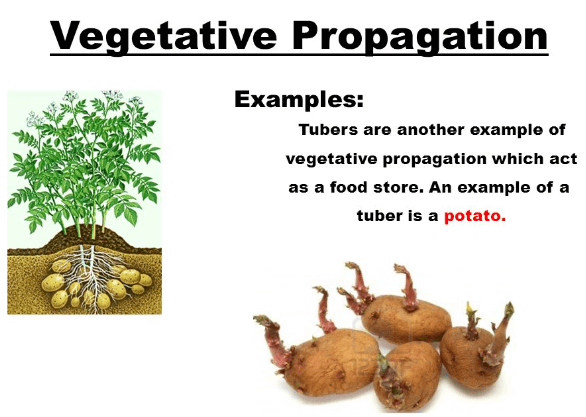
6. Spore Formation
Spore formation is a reproductive method used by certain organisms, including fungi, algae, and some plants, to produce offspring. Spores are small, typically single-celled structures that are capable of growing into new individuals under suitable conditions. These spores are often released into the environment, where they can be dispersed by air, water, or other means.
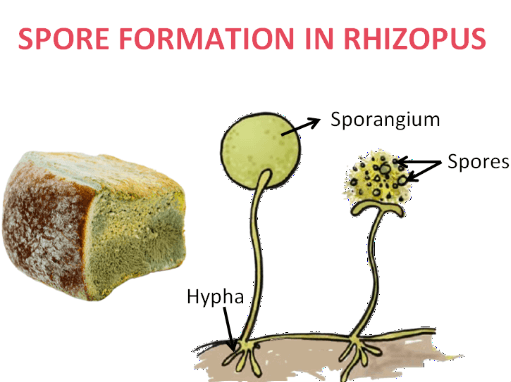
Spore formation is a form of asexual reproduction, and it allows organisms to produce many offspring quickly. Each spore contains the genetic information necessary to develop into a mature organism, and it can endure harsh conditions until it finds a suitable environment for growth and development.
Mechanism of different types of Asexual Reproduction
The mechanisms that allow organisms to reproduce asexually and produce offspring that share their genetic makeup, can be advantageous in certain situations. Keep in mind that sharing the specific mechanism can vary among different organisms and species.
Binary fission (Bacteria)
- The bacteria cell’s DNA replicates, creating two identical copies.
- The cell elongates and the copies of DNA move toward opposite ends of the cell.
- The cell begins to divide in the center, eventually creating two separate daughter cells, each containing a copy of the original DNA.
- The daughter cells are genetically identical to the parent cell and can continue to grow and function independently.
Budding (Yeast)
- A small bud forms on the surface of the yeast cell. This bud is essentially a smaller version of the parent cell.
- The nucleus of the parent cell divides, and one of the nuclei migrates into the bud.
- The bud continues to grow as the parent cell provides nutrients.
- Eventually, the bud separates from the parent cell, becoming an independent yeast cell.
Vegetative Propagation (Plants-Runners)
- A specialized horizontal stem called a runner (or stolon) grows along the ground.
- At certain intervals, modes on the runner produce new plantlets.
- These plantlets develop roots and shoots while attached to the parent plant.
- Once they are well-established, the platelets can detach from the runner and grow as independent plants.
Fragmentation
- The parent organism breaks into smaller fragments due to physical or environmental factors.
- Each fragment has the ability to regenerate missing parts. Many organisms have specialized cells (stem cells) that can differentiate into various cell types needed for regeneration.
- Each fragment starts growing and developing the necessary tissues to become a new individual.
- As the fragments continue to grow, they eventually become fully independent organisms. This process can be seen in certain types of worms, lizards, and starfish.
Spore Formation
- A specialized reproductive structure called a spore develops within the parent organism. Spores are often produced in large numbers.
- The spores mature and become resistant to harsh environmental conditions. This adaptability helps them survive until conditions are favorable for growth.
- When the conditions are right, the parent organism releases the spores into the environment.
- If a spore lands in a suitable environment, it germinates. This involves the spore developing into a new individual, often through mitotic division.
Regeneration
- Regeneration is often triggered by the loss or damage of body parts. Some organisms have specialized regions or structures delicate to regeneration, like planarian flatworms with their regeneration-capable regions called “blastemas”.
- Cells near the site of regeneration revert to an earlier developmental state, similar to stem cells. This allows them to form various cell types needed for tissue regrowth.
- The differentiated cells divide rapidly to create new tissue at the site of regeneration.
- In more complex organisms, mechanisms exist to ensure that the regenerated tissue forms the correct structures and follows the proper organization.
- Over time, the regenerating tissue develops, restoring the organism’s lost parts.



 50 Vegetables Name for Kids in English a...
50 Vegetables Name for Kids in English a...
 Food Chain: Definition, Types, Examples,...
Food Chain: Definition, Types, Examples,...
 Human Respiratory System: Definition, Di...
Human Respiratory System: Definition, Di...













